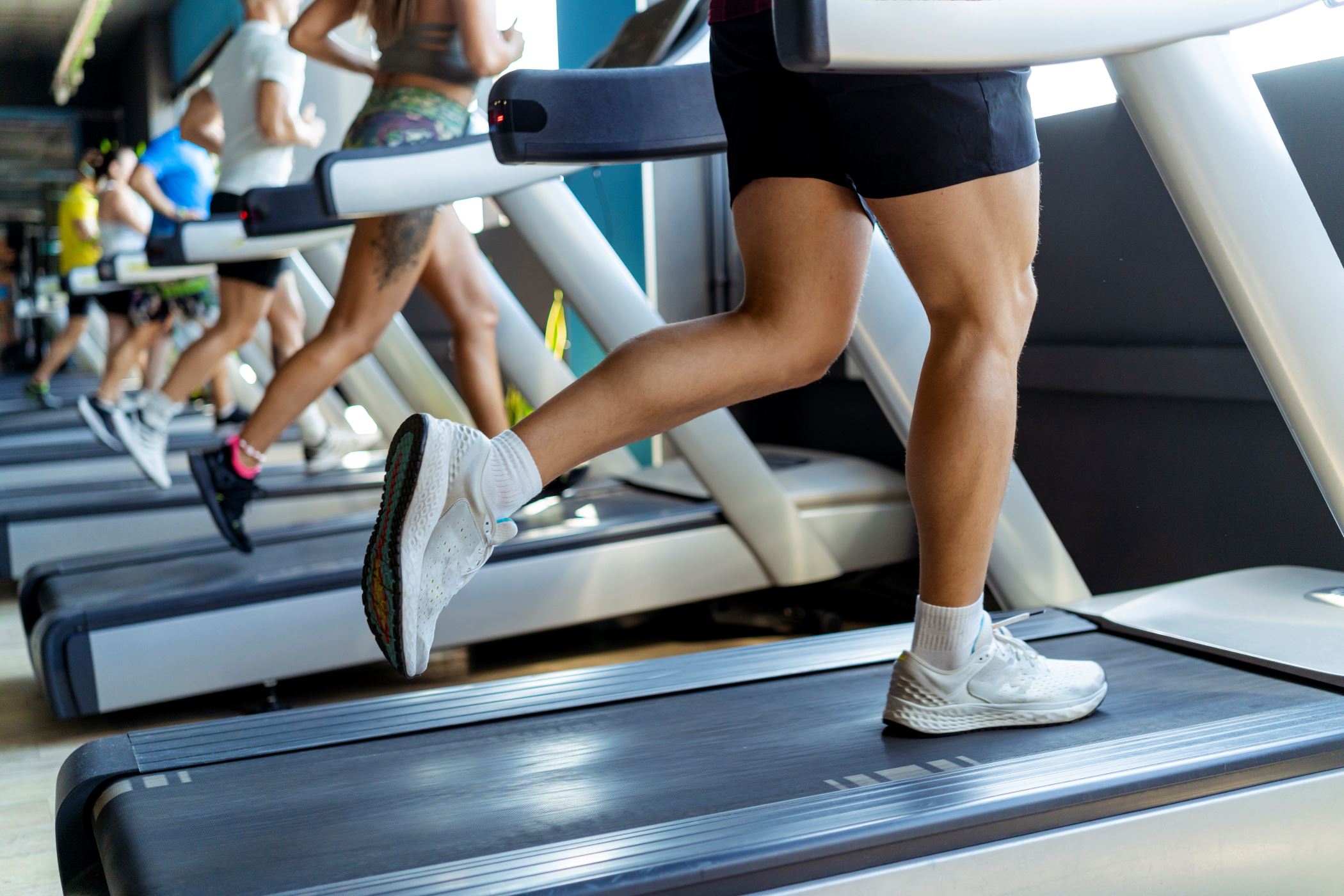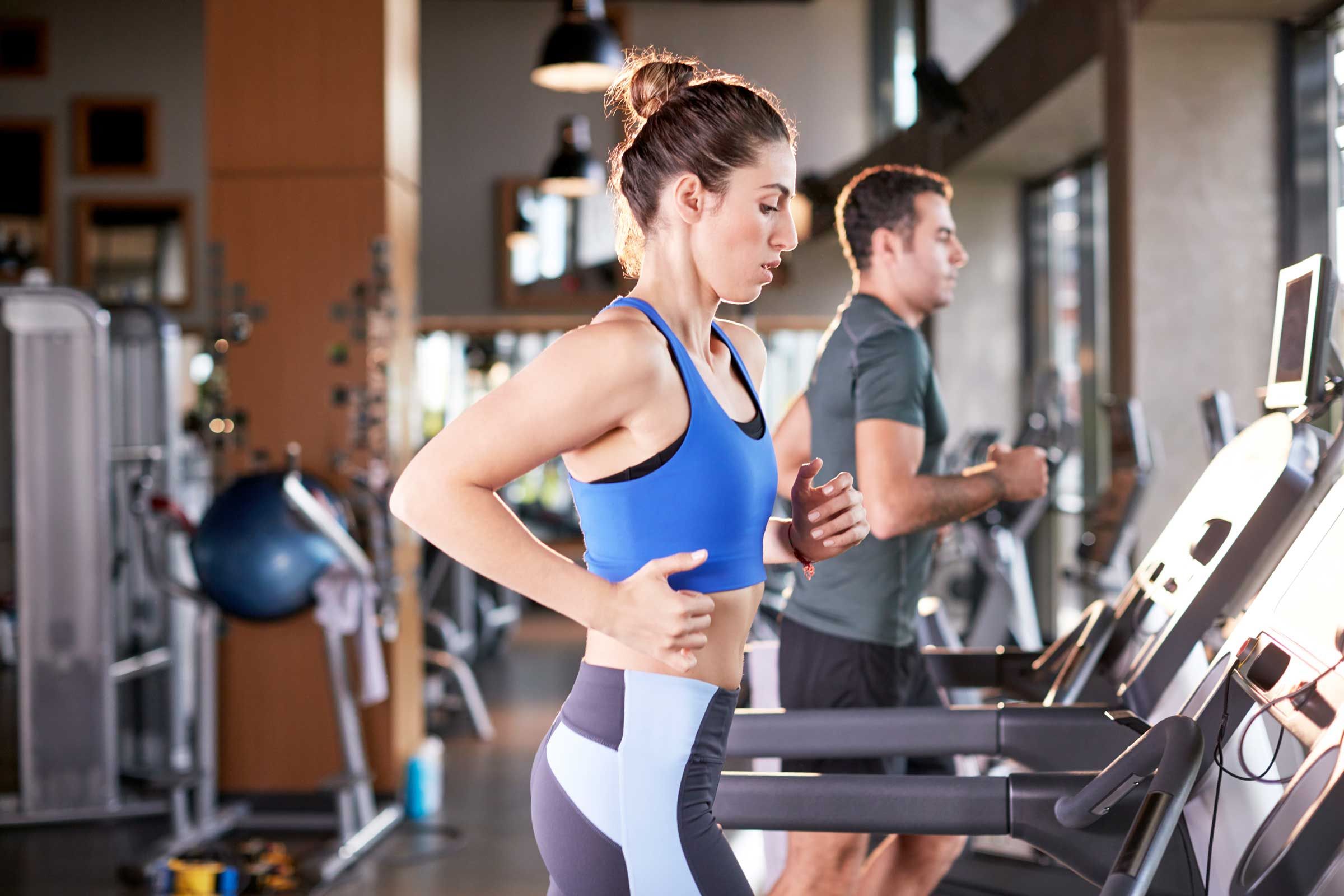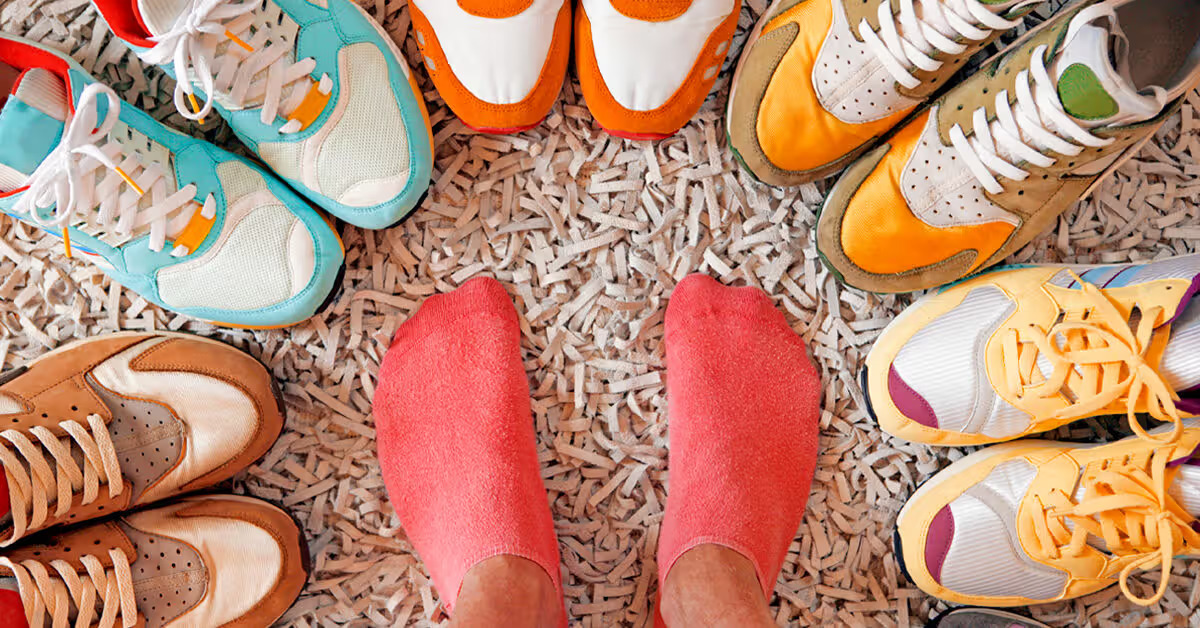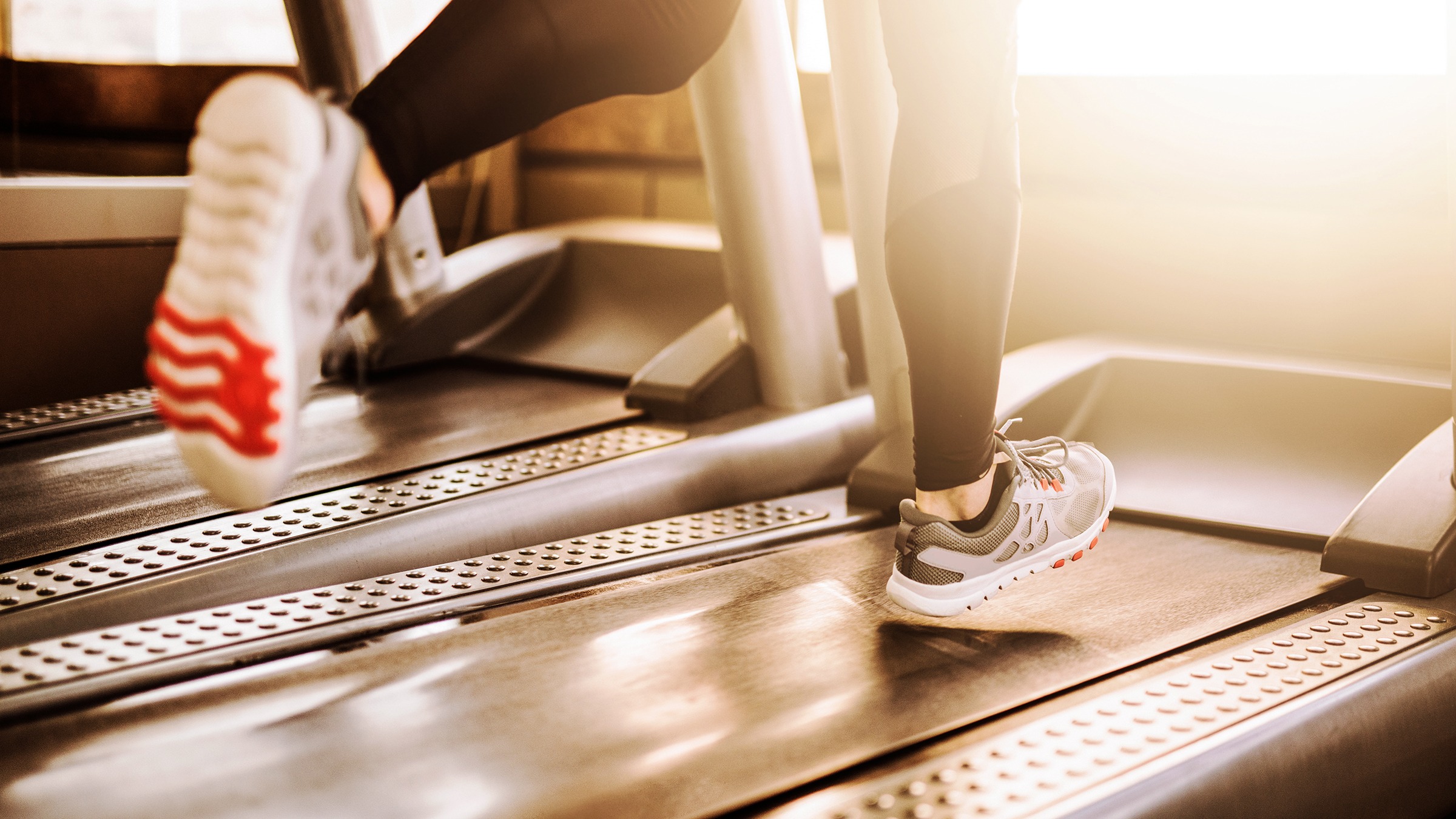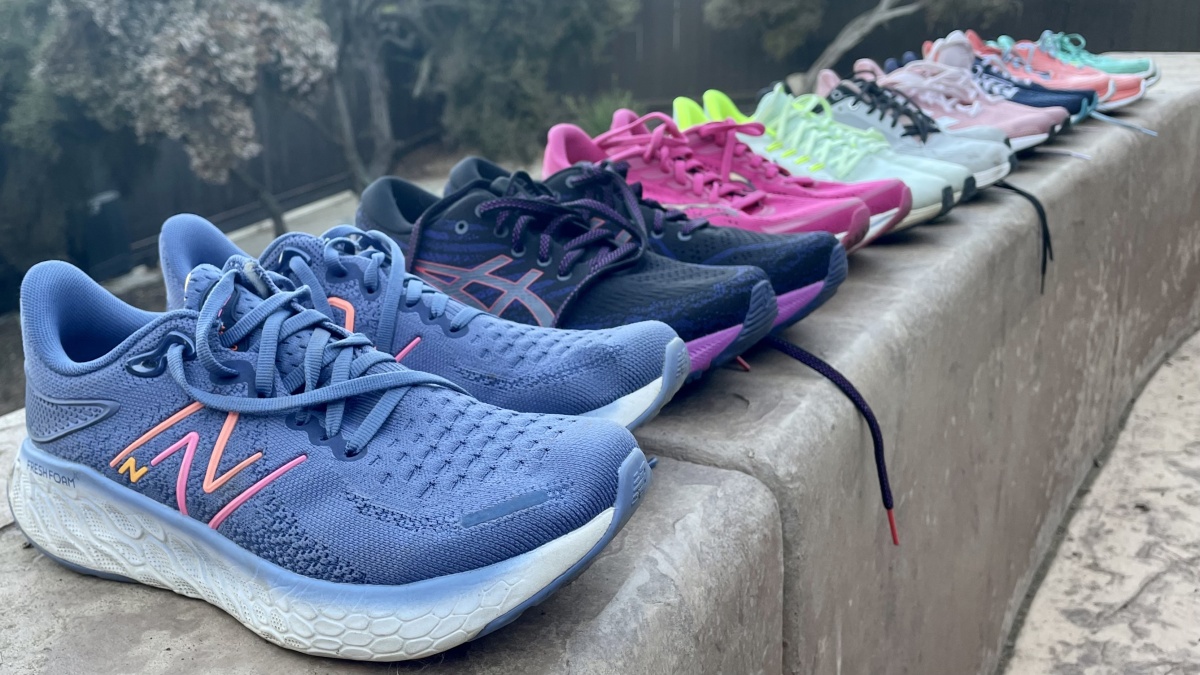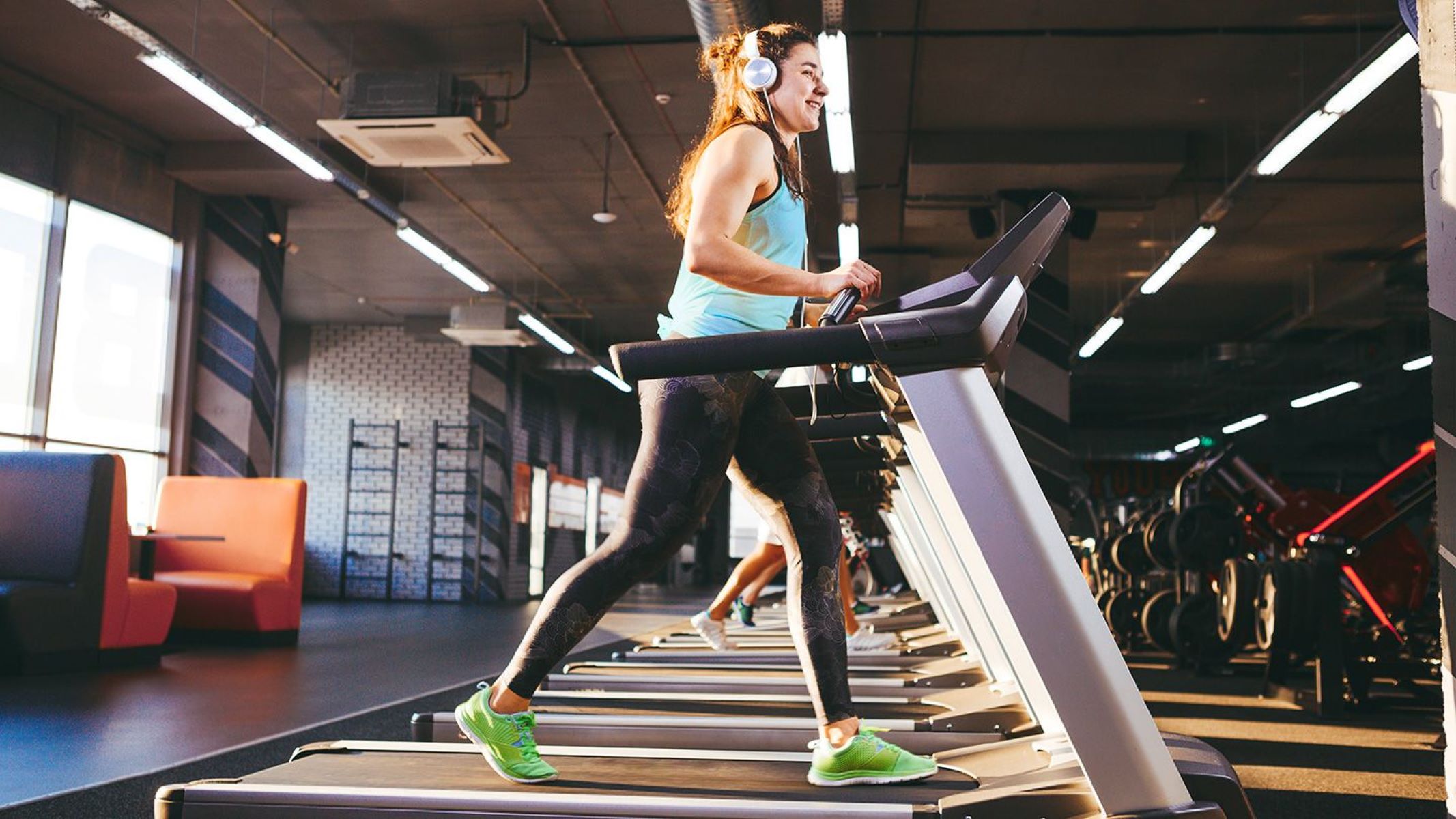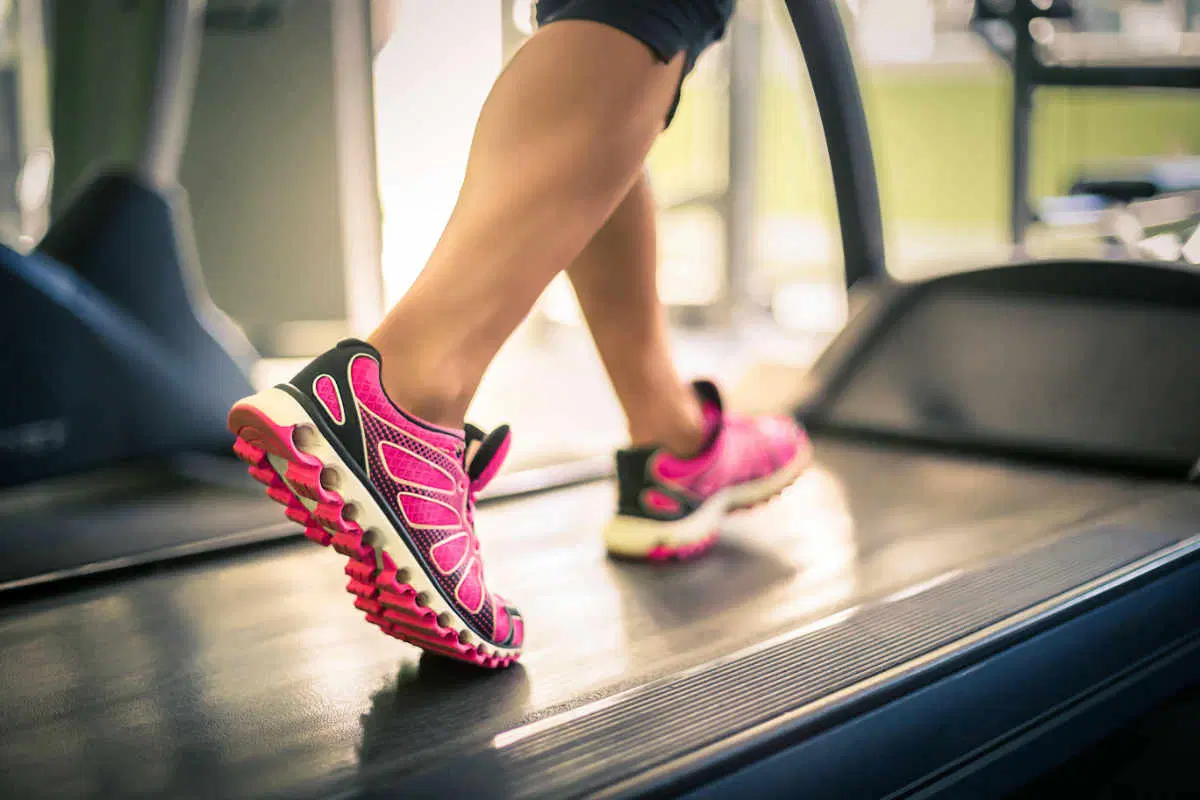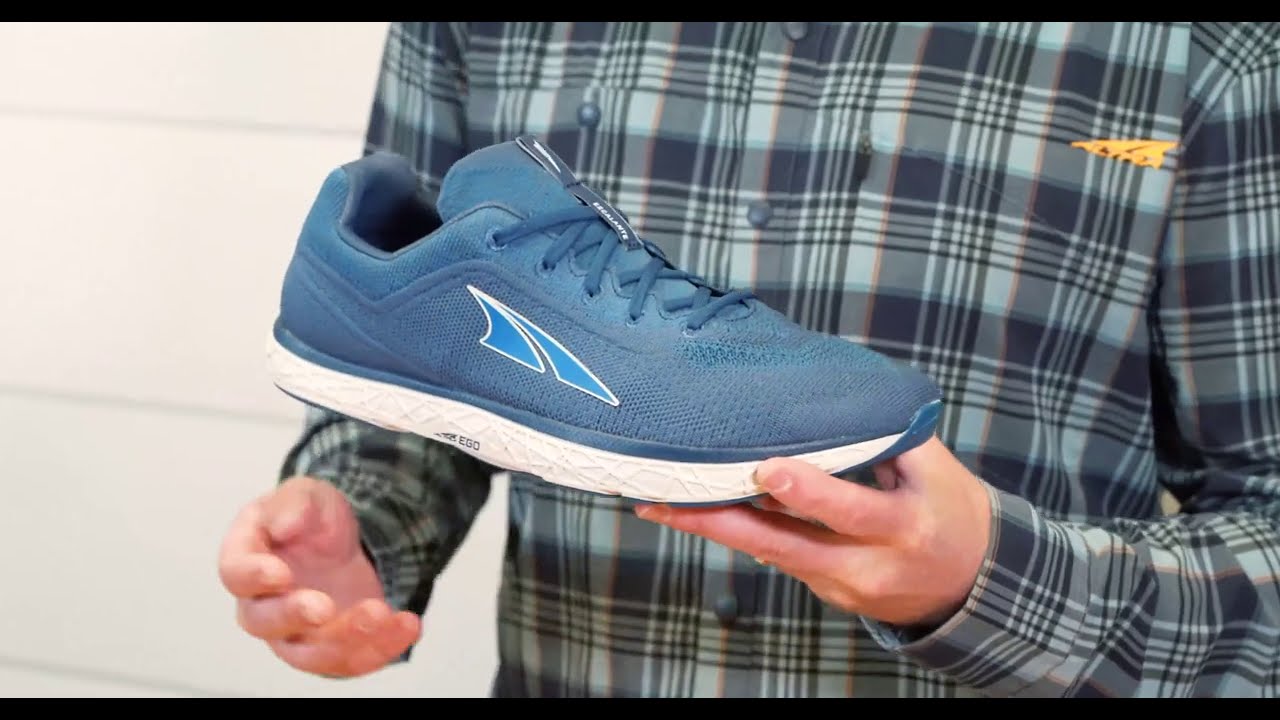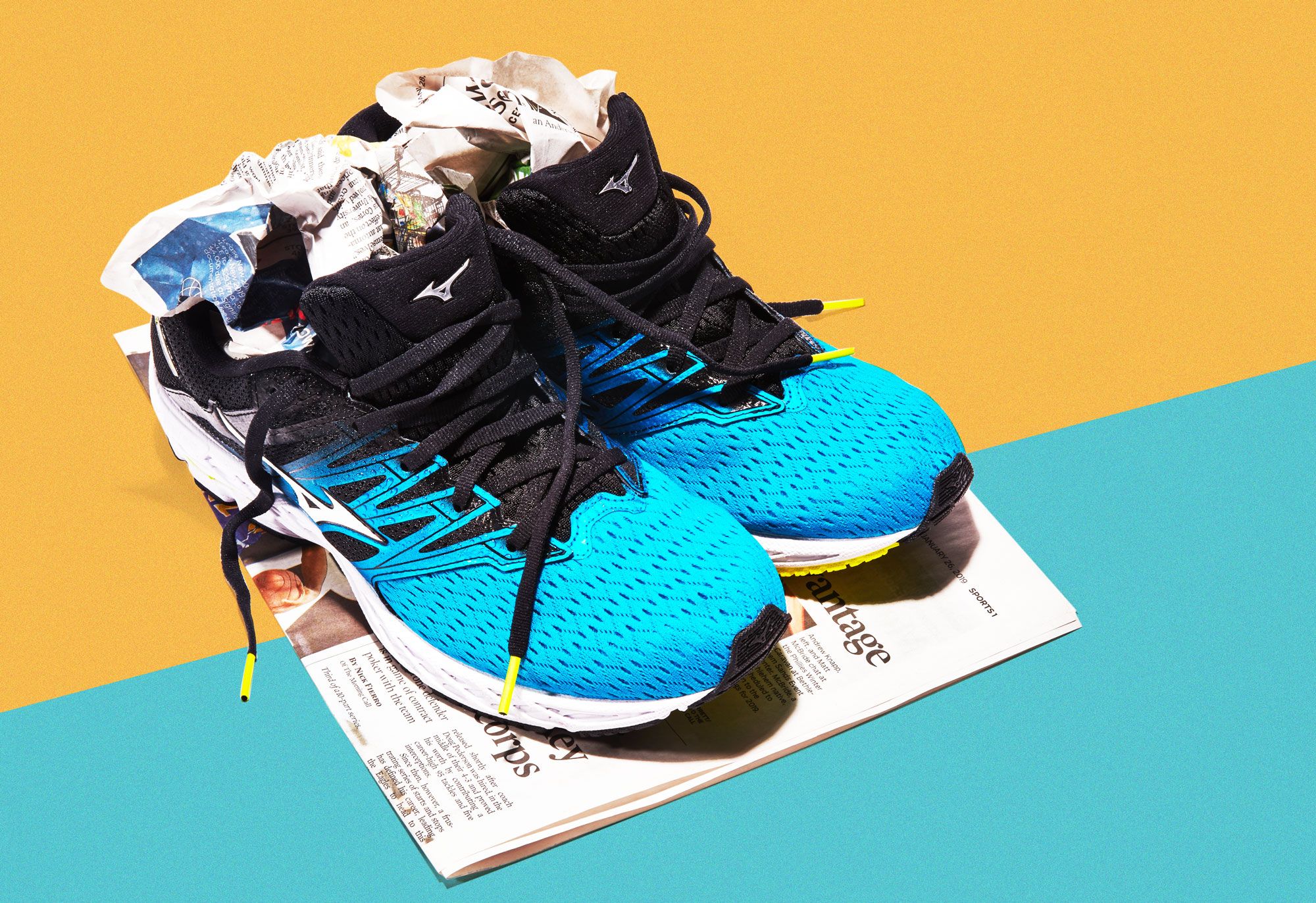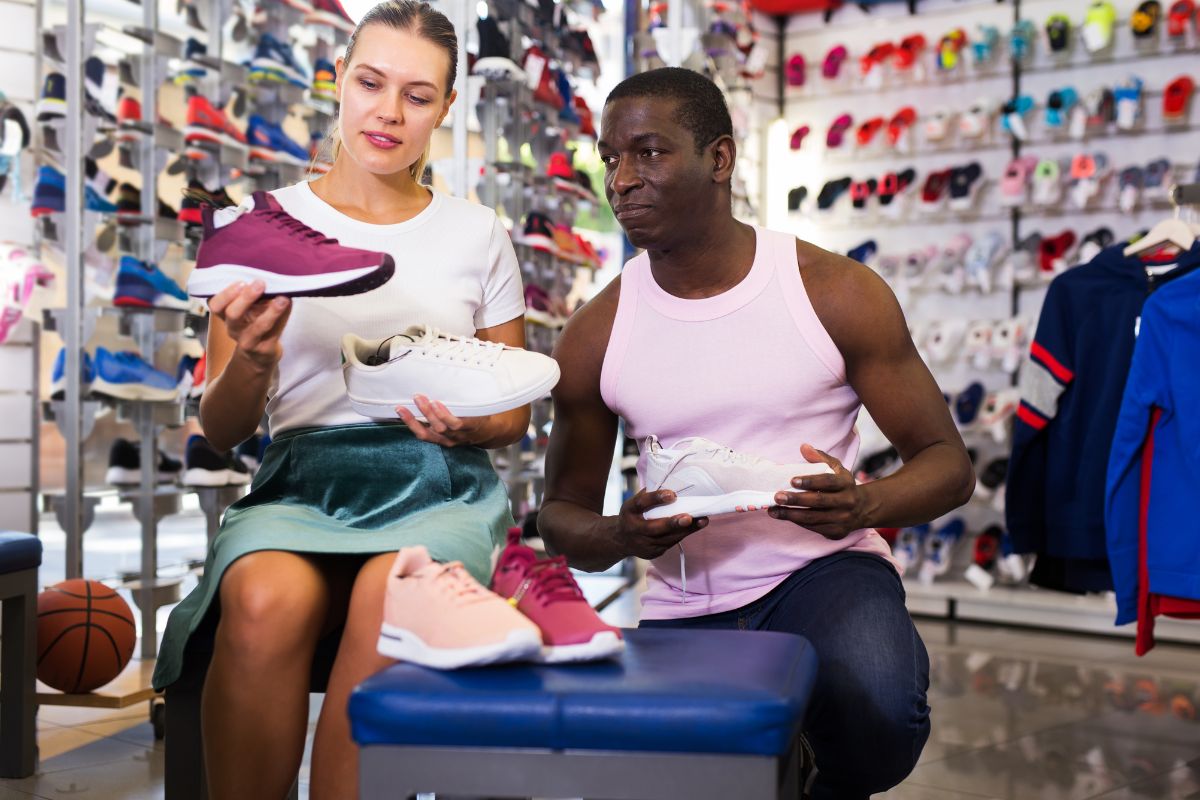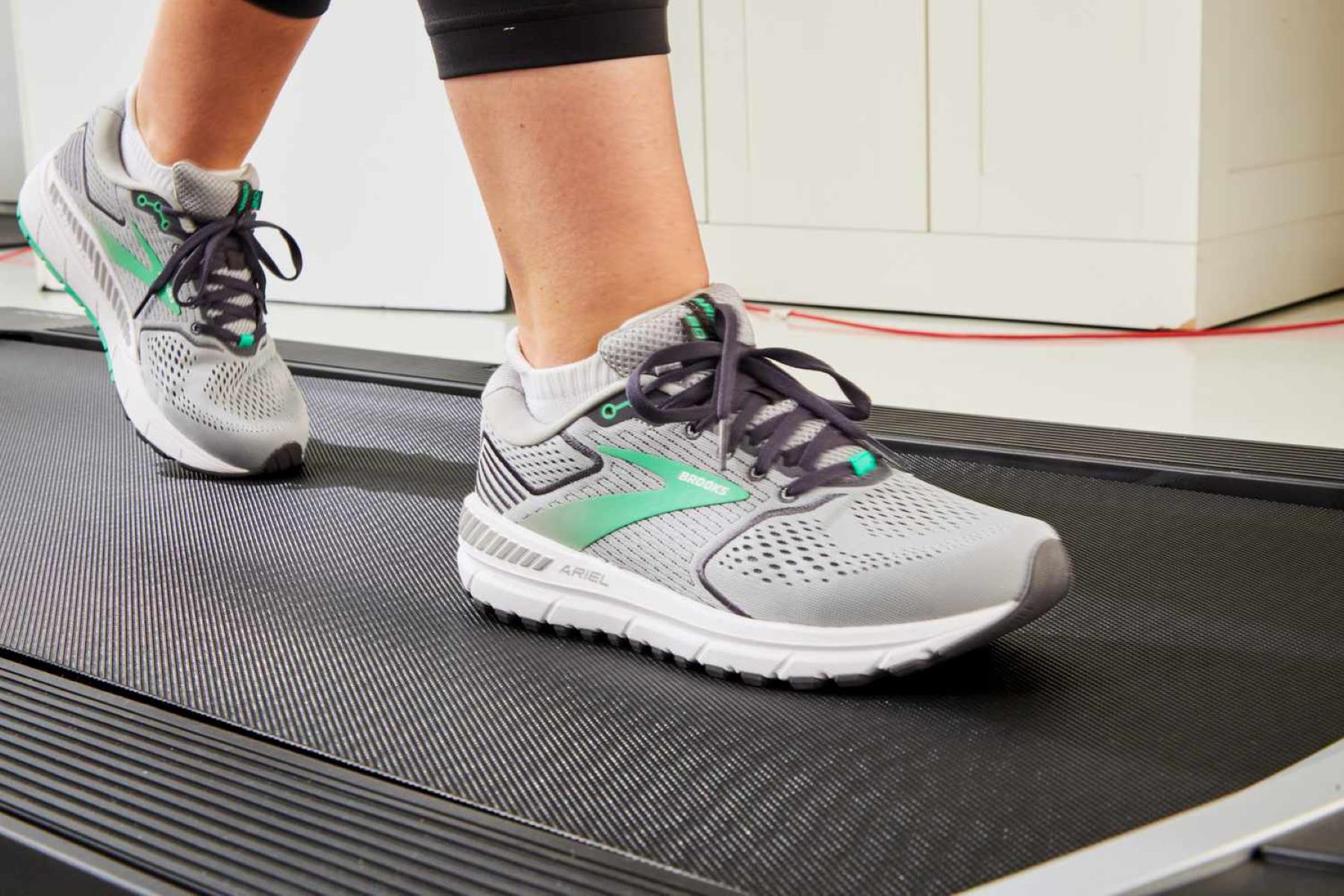

Featured
What Are The Best Shoes For Treadmill
Modified: August 19, 2023
Discover the top recommended shoes for your treadmill workouts. Stay #featured with these high-quality, comfortable footwear options, designed to enhance performance and support your every stride.
Introduction
When it comes to running on a treadmill, having the right shoes can make all the difference. The right footwear not only provides comfort but also helps improve performance and minimize the risk of injuries. But with so many options available, how do you choose the best shoes for treadmill running?
Factors such as cushioning, stability, flexibility, breathability, and traction should be considered when selecting treadmill shoes. Each factor plays a crucial role in ensuring a smooth and enjoyable running experience.
Cushioning and shock absorption are essential for protecting your joints and minimizing the impact of each stride. Running on a treadmill can be repetitive, so having shoes with adequate cushioning can reduce stress on your feet, ankles, and knees.
Stability and support are also crucial aspects to consider. Treadmill running requires a solid base to maintain balance and prevent pronation or supination. Look for shoes with features like medial support or a sturdy midsole to provide stability and help maintain proper foot alignment.
Flexibility and responsiveness are key for a more natural running motion. Shoes that are too rigid can hinder your gait, while overly flexible shoes may lack support. Finding the right balance is essential to ensure optimal performance and reduce the risk of strain or injury.
Breathability and moisture management are particularly important as running on a treadmill can make your feet hot and sweaty. Shoes with breathable materials and moisture-wicking properties help keep your feet cool and dry, preventing discomfort and potential issues like blisters or fungal infections.
Traction and grip are vital for safety, especially when running on a treadmill. Look for shoes with rubber outsoles and a tread pattern designed to provide excellent traction on the treadmill surface. This will help you maintain stability and prevent slips or falls.
When it comes to choosing the right shoes for treadmill running, it’s important to consider your specific running gait and foot type. Different types of shoes suit different running styles and foot needs.
In the following sections, we will explore various types of shoes suitable for treadmill running, along with tips for choosing the best pair to meet your needs and preferences.
Factors to Consider when Choosing Treadmill Shoes
When it comes to choosing the best shoes for treadmill running, several factors need to be taken into consideration. These factors will ensure that you select a pair of shoes that provide the necessary comfort, support, and performance for your treadmill workouts.
Cushioning and Shock Absorption: One of the primary factors to consider is the amount of cushioning and shock absorption that the shoes provide. Treadmill running can be high-impact, so having shoes with adequate cushioning will help reduce the stress on your joints and minimize the risk of injuries.
Stability and Support: Another important factor is the stability and support that the shoes offer. Look for shoes with features like a supportive midsole or dedicated support systems to prevent excessive pronation or supination. This will help maintain proper foot alignment and reduce the risk of overuse injuries.
Flexibility and Responsiveness: The flexibility and responsiveness of the shoes are also crucial. Shoes that are too rigid can restrict your natural foot motion and hinder your running performance. On the other hand, overly flexible shoes may lack support, leading to instability and potential injuries. Find shoes that strike the right balance between flexibility and support for optimal performance.
Breathability and Moisture Management: Running on a treadmill can make your feet hot and sweaty, so it’s important to choose shoes with good breathability and moisture management. Look for shoes with breathable upper materials and moisture-wicking properties to keep your feet cool and dry during your workouts. This will prevent discomfort, blisters, and potential foot problems.
Traction and Grip: Treadmills have a smooth and often slippery surface, so having shoes with proper traction and grip is essential for safety. Look for shoes with a rubber outsole and a tread pattern that provides reliable traction on the treadmill surface. This will help you maintain stability and prevent slips or falls.
By considering these factors when selecting treadmill shoes, you can ensure that you choose a pair that meets your specific needs and preferences. The right shoes will not only enhance your comfort and performance but also help prevent injuries, allowing you to enjoy your treadmill workouts to the fullest.
Cushioning and Shock Absorption
When it comes to choosing the best shoes for treadmill running, cushioning and shock absorption are two crucial factors to consider. Treadmill running can be high-impact, so having adequate cushioning in your shoes is essential for protecting your joints and minimizing the risk of injuries.
The cushioning in treadmill shoes helps to absorb the impact of each stride, reducing the stress on your feet, ankles, and knees. It provides a comfortable and supportive platform for your feet, allowing you to run for longer periods without discomfort or pain. The right amount of cushioning will ensure a smooth and responsive feel as you run on the treadmill.
There are different types of cushioning technologies used in treadmill shoes. Some brands use foam-based materials such as EVA (ethylene-vinyl acetate) or PU (polyurethane) foam to provide cushioning. These materials are lightweight and offer excellent shock absorption properties.
Others may use specific cushioning technologies, such as air or gel pockets, to enhance shock absorption. These technologies distribute the impact forces evenly throughout the shoe, reducing the strain on your joints and minimizing the risk of injuries.
When choosing treadmill shoes based on cushioning, consider your running style and preferences. If you prefer a plush and cushioned feel, look for shoes with thick, soft midsoles. These shoes are ideal for runners with a neutral or underpronation (supination) gait.
However, if you have a tendency to overpronate, meaning your foot rolls inward excessively, you may benefit from shoes with additional cushioning in the medial (inner) side of the midsole. These shoes provide extra support and help correct your foot alignment for a more efficient and stable stride.
It’s important to note that while cushioning is essential, too much cushioning can also be detrimental. Shoes with excessive cushioning may compromise stability and responsiveness, making it more difficult to maintain proper form and potentially increasing the risk of ankle sprains or other injuries.
Ultimately, the right amount of cushioning will vary depending on your individual needs, running style, and comfort preferences. It’s recommended to try on different treadmill shoes and test them by jogging or running on a treadmill to find the ideal level of cushioning that suits your needs.
Remember, cushioning and shock absorption are key factors to consider when choosing treadmill shoes. They play a significant role in providing comfort, protecting your joints, and enhancing your overall running experience. By selecting shoes with the right amount of cushioning, you can maximize your performance and reduce the risk of injuries during your treadmill workouts.
Stability and Support
When it comes to treadmill running, stability and support are crucial factors to consider when choosing the right shoes. Having the proper stability and support not only enhances your performance but also reduces the risk of injuries.
Stability in treadmill shoes refers to the ability to maintain balance and prevent excessive rolling of the foot. During running, your foot undergoes pronation (inward rolling) and supination (outward rolling) motions. Excessive pronation or supination can lead to improper foot alignment, resulting in various lower body injuries.
To address stability concerns, many treadmill shoes feature features such as a supportive midsole or a shoe last design that helps guide the foot into a natural and efficient motion. These stability features are especially beneficial for individuals who overpronate, as they help to control the inward rolling of the foot.
Support is another critical aspect of treadmill shoes, particularly for runners with flat feet or low arches. Flat feet tend to overpronate, and without proper support, this can lead to various issues such as shin splints, plantar fasciitis, or knee pain.
When looking for stability and support in treadmill shoes, pay attention to features like a built-in arch support system or a reinforced midsole. These components help provide structure and prevent excessive arch collapse during running.
Finding the right balance between stability and support is crucial. While too much stability may restrict the natural motion of your foot, too little support can lead to overpronation or other biomechanical issues.
It’s important to consider your individual running style and foot type when selecting shoes with the appropriate stability and support. If you know that you have a tendency to overpronate, opt for shoes with pronation control features to promote proper foot alignment. On the other hand, if you have a neutral gait, you may not require as much stability but can still benefit from shoes with moderate support.
Taking some time to understand your foot type and gait pattern can be helpful in determining the right level of stability and support you need in your treadmill shoes. If you’re unsure, visiting a specialized running store or consulting with a podiatrist or sports medicine professional can provide valuable insights.
Having adequate stability and support in your treadmill shoes will not only enhance your comfort but also promote optimal foot alignment, leading to improved running efficiency and reduced risk of injuries. Choose shoes that offer the right level of stability and support for your specific needs to maximize your running performance and protect your feet and lower body.
Flexibility and Responsiveness
Flexibility and responsiveness are important factors to consider when choosing treadmill shoes. These qualities allow for a more natural foot motion and can greatly impact your running performance on the treadmill.
Flexibility refers to the shoe’s ability to bend and move with your foot during each stride. A shoe that is too rigid can restrict your foot’s natural movement, leading to discomfort and potentially causing strain or injury. On the other hand, a shoe that is too flexible may lack the necessary support, potentially compromising stability.
It’s important to find a balance between flexibility and support that suits your individual needs and running style. Treadmill shoes with a good level of flexibility will allow for a smooth and efficient transition from heel to toe, promoting a more natural gait.
Responsiveness, on the other hand, refers to how quickly the shoe returns energy to the runner. A highly responsive shoe will efficiently transfer the energy from each stride, providing a spring-like effect to propel you forward. This can help improve your running speed and overall performance on the treadmill.
Shoes with good responsiveness typically have a combination of cushioning and firmness in the midsole. The cushioning absorbs the impact, while the firmness provides a responsive feel and energy return. This balance allows for a more efficient and dynamic running experience, optimizing your performance.
When selecting treadmill shoes based on flexibility and responsiveness, consider your running style and preferences. If you prefer a more minimalistic feel and enjoy a closer-to-the-ground sensation, you may opt for shoes with lower heel-to-toe drop and a more flexible midsole.
However, if you prefer a slightly more cushioned and responsive ride, look for shoes with a slightly higher heel-to-toe drop and a midsole that balances responsiveness with cushioning.
It’s essential to try on different treadmill shoes and test them by walking or jogging on a treadmill to assess their flexibility and responsiveness. Pay attention to how the shoes bend and flex with your foot, and how they feel when you push off and transition from one stride to the next.
By choosing treadmill shoes that offer the right balance of flexibility and responsiveness, you can enhance your running performance and make your treadmill workouts more enjoyable. These shoes will provide the necessary support and energy return to optimize your stride and help you achieve your fitness goals.
Breathability and Moisture Management
When it comes to treadmill running, breathability and moisture management are essential factors to consider in your choice of shoes. Running on a treadmill can make your feet hot and sweaty, and having shoes that offer good breathability and moisture-wicking properties can greatly enhance your comfort and overall running experience.
Breathability refers to the shoe’s ability to allow air circulation around your feet. Proper airflow helps keep your feet cool and prevents them from becoming overheated. Shoes with breathable upper materials, such as mesh or perforated panels, allow air to flow in and out, dissipating heat and moisture.
Moisture management is equally important when it comes to treadmill shoes. Running on a treadmill can cause your feet to sweat more than when running outdoors due to the lack of natural airflow. Shoes with moisture-wicking properties or a moisture-wicking lining can help draw sweat away from your feet, keeping them dry and reducing the risk of discomfort, blisters, and foot odor.
Choosing treadmill shoes that prioritize breathability and moisture management can significantly benefit your performance and foot health. Shoes that effectively manage moisture can help prevent issues like blisters, fungal infections, or skin irritations that can result from sweat and excessive moisture buildup inside the shoes.
Consider the climate and your running intensity when selecting shoes with good breathability and moisture management. If you live in a hot and humid area or tend to sweat excessively during your workouts, look for shoes with highly breathable materials and advanced moisture-wicking technologies.
Furthermore, pay attention to the shoe’s ventilation features, such as breathable mesh panels or perforations, which can enhance airflow and keep your feet cool and dry.
It’s worth noting that the breathability and moisture management properties of shoes can vary depending on the brand and model. Reading reviews or seeking recommendations from other runners who prioritize these features can help you make an informed decision.
Regular maintenance is also essential to ensure the longevity of the breathability and moisture management properties of your treadmill shoes. Clean them regularly, remove any dirt or debris, and allow them to fully dry after each use to prevent the buildup of odor-causing bacteria or mold.
By choosing treadmill shoes that excel in breathability and moisture management, you can run more comfortably and confidently. Your feet will stay cool, dry, and free from issues caused by excessive moisture, allowing you to focus on your performance and enjoy your treadmill workouts to the fullest.
Traction and Grip
When it comes to treadmill running, having proper traction and grip is essential for safety and a confident stride. Treadmills typically have a smooth and sometimes slippery surface, and shoes with adequate traction can help prevent slips, falls, and potential injuries.
Good traction in treadmill shoes is achieved through the use of rubber outsoles and a well-designed tread pattern. The rubber material ensures a strong grip on the treadmill surface, helping to maintain stability as you run. The tread pattern, with its grooves and patterns, helps to channel away water or other substances that may reduce traction.
When choosing treadmill shoes, look for those with a durable rubber outsole that provides reliable traction and grip. Flexibility is also a factor to consider. Shoes that are too rigid may hinder traction, while overly flexible shoes may lack the necessary grip. Finding the right balance between flexibility and grip will ensure optimal performance.
The type of exercise you plan to do on the treadmill may also influence the level of traction and grip you need. For example, if you intend to engage in high-intensity interval training (HIIT) or sprints on the treadmill, a shoe with excellent grip is crucial for quick movements and changes in direction.
In addition to traction and grip, stability is also important. Treadmill shoes with a wider base and reinforced midsole can provide the stability needed for a confident stride on the treadmill surface.
It’s essential to try on different treadmill shoes and test their traction and grip by walking or jogging on a treadmill. Pay attention to how the shoes feel and how well they grip the surface. If possible, simulate quick changes in direction or movement patterns that you typically perform during your workouts.
Consider your running style and foot mechanics when selecting treadmill shoes for traction and grip. If you have a tendency to overpronate, look for shoes that offer stability and support while still providing reliable traction. If you have a neutral gait, focus on finding shoes that offer both grip and flexibility.
Regular care and maintenance are necessary to ensure the longevity of the traction and grip of your treadmill shoes. Clean the outsoles regularly to remove any dirt or debris that may compromise the traction. Additionally, inspect your shoes periodically for any signs of wear or damage that may affect the grip.
By choosing treadmill shoes with excellent traction and grip, you can run with confidence, knowing that you have the stability and support needed to stay safe and maintain a steady stride on the treadmill surface. This will enhance your overall running experience and help you achieve your fitness goals.
Types of Shoes Suitable for Treadmill Running
When it comes to treadmill running, there are several types of shoes available, each designed to cater to different running styles and foot needs. Understanding these shoe types can help you choose the most suitable pair for your treadmill workouts.
Neutral Running Shoes: Neutral running shoes are designed for runners with a neutral foot strike, meaning their foot rolls relatively straight from heel to toe. These shoes offer a good balance of cushioning, flexibility, and durability, making them suitable for most treadmill runners who don’t require additional stability features.
Motion Control Running Shoes: Motion control running shoes are specifically designed for runners with overpronation, where the foot rolls excessively inward during the stride. These shoes feature firmer midsoles and additional support structures to help correct the foot’s alignment and provide stability. They are ideal for treadmill runners who need extra pronation control and support to avoid potential injuries.
Minimalist Running Shoes: Minimalist running shoes, also known as barefoot-style shoes, are designed to mimic the feel of running barefoot. They typically have a low-profile design, minimal cushioning, and flexible soles. These shoes are great for treadmill runners who prefer a more natural and lightweight feel during their workouts. However, they may not be suitable for those with specific foot conditions or who require extra support.
Cross-Training Shoes: Cross-training shoes are versatile options that are suitable for a variety of activities, including treadmill running. These shoes provide a balance between cushioning, flexibility, stability, and support, making them a good choice for gym-goers who participate in various exercises along with treadmill running.
When choosing the type of shoe suitable for treadmill running, consider your running style, foot mechanics, and personal preference. If you’re unsure, it’s recommended to consult with a running specialist or footwear expert who can analyze your running gait and provide recommendations tailored to your specific needs.
It’s important to note that while these shoe types provide general guidelines, individual variations exist within each category. It’s crucial to try on different models and brands, as the fit and feel can vary. Testing the shoes on a treadmill or seeking advice from experts can help you make an informed decision.
Ultimately, selecting the right type of shoe for treadmill running will contribute to your overall comfort, performance, and injury prevention. Find the shoe that aligns with your unique needs and running preferences, allowing you to get the most out of your treadmill workouts.
Neutral Running Shoes
Neutral running shoes are a popular choice for many treadmill runners. As the name suggests, these shoes are designed for individuals with a neutral foot strike, where the foot rolls relatively straight from heel to toe during the running motion.
Neutral running shoes offer a good balance of cushioning, flexibility, and durability. They are suitable for treadmill runners who don’t require additional stability features, meaning they have a neutral gait and do not tend to overpronate or supinate excessively.
One of the key features of neutral running shoes is the cushioning. These shoes have adequate cushioning in the midsole to absorb the impact of each stride, providing a comfortable and responsive feel during treadmill workouts. The cushioning helps reduce stress on the feet, ankles, and knees, minimizing the risk of injuries and enhancing overall comfort.
The midsole of neutral running shoes is typically made of materials like EVA (ethylene-vinyl acetate) or PU (polyurethane) foam. These materials deliver a combination of softness, responsiveness, and durability, ensuring a smooth and enjoyable running experience on the treadmill.
Flexibility is another important aspect of neutral running shoes. They are designed to allow for a natural and effortless foot motion, promoting a more efficient stride. The flexibility of the shoe facilitates a smooth and continuous transition from heel to toe, optimizing running efficiency and reducing the risk of strain or injury.
Durability is also a notable feature of neutral running shoes. Treadmill running can be repetitive and may cause more wear and tear on the shoes compared to outdoor running. Neutral running shoes are designed to withstand the rigors of regular treadmill use, with durable materials and reinforced construction.
When selecting neutral running shoes, consider factors such as fit, comfort, and the specific level of cushioning that suits your preferences. Some runners prefer a firmer feel for more responsiveness, while others prefer a softer and more cushioned ride. Trying on different models and brands will allow you to find the perfect pair that meets your individual needs.
It’s important to note that even within the category of neutral running shoes, there can be variations in terms of cushioning, arch support, and other features. Some models may offer more cushioning for longer distance training, while others may be designed with a focus on speed and responsiveness for shorter, faster workouts.
Ultimately, neutral running shoes are an excellent choice for treadmill runners with a neutral gait. They provide the necessary cushioning, flexibility, and durability to enhance your comfort and performance during treadmill workouts. By selecting the right pair of neutral running shoes, you can enjoy the benefits of a stable and cushioned ride, allowing you to reach your fitness goals effectively.
Motion Control Running Shoes
Motion control running shoes are designed for individuals with overpronation, where the foot rolls excessively inward during the running stride. These shoes provide the necessary support and stability to correct foot positioning, reduce overpronation, and minimize the risk of overuse injuries.
One of the key features of motion control running shoes is their ability to control and limit the inward rolling motion of the foot. These shoes have a firm and supportive midsole that acts as a stabilizing platform, preventing excessive pronation and promoting proper foot alignment.
The medial (inner) side of the midsole in motion control shoes is often composed of denser materials or includes special support features like a medial post. This added support structure combats the excessive rolling of the foot and helps guide it towards a more neutral position.
The firmness of motion control shoes not only provides stability but also improves the overall efficiency of the running gait. By reducing excessive pronation, these shoes ensure that the energy from each stride is effectively transferred, maximizing performance and minimizing wasted motion.
In addition to stability and support, motion control shoes often offer reasonable cushioning to provide ample shock absorption. This cushioning helps reduce the impact on the joints, particularly on the feet, ankles, and knees, which can be beneficial for runners who are prone to injuries caused by overpronation.
When selecting motion control running shoes, it’s important to consider factors such as fit, comfort, and the severity of your overpronation. A proper fit is essential to ensure that the shoe effectively supports your foot and provides the necessary stability. It’s recommended to try on different models and brands and seek the assistance of a knowledgeable salesperson to find the ideal pair.
It’s worth noting that motion control shoes tend to be slightly heavier and less flexible compared to other types of running shoes. These design characteristics help provide the necessary stability and support but may feel different if you are accustomed to lighter or more flexible footwear.
While motion control running shoes are primarily designed for individuals with overpronation, it’s important to consult with a healthcare professional or running specialist to determine if they are the right choice for your specific foot mechanics and running style. They can evaluate your gait and make appropriate recommendations to address any pronation-related issues.
By wearing motion control running shoes, individuals with overpronation can experience improved foot alignment, enhanced stability, and reduced risk of injuries. These shoes offer the necessary support and cushioning to ensure a comfortable and efficient running experience, helping you achieve your fitness goals while maintaining proper foot health.
Minimalist Running Shoes
Minimalist running shoes, also known as barefoot-style shoes, are designed to provide a natural and minimalistic running experience. These shoes aim to mimic the sensation of running barefoot while still offering some level of protection and comfort.
One of the key characteristics of minimalist running shoes is their low-profile design. They typically have a thin and flexible sole, allowing for a closer connection to the ground. This enables a more natural and responsive running experience, as the foot can better sense and adapt to the terrain.
The minimal cushioning in these shoes encourages a forefoot or midfoot strike pattern, where the ball of the foot lands first, rather than a heel strike. This promotes a more efficient running gait and can help reduce the impact on the joints, particularly the knees.
Minimalist running shoes are generally lighter in weight compared to traditional running shoes. This lightweight design not only enhances the natural feel but also contributes to a more efficient and effortless stride.
These shoes often have a wider toe box, allowing the toes to splay and engage the muscles naturally. This can help improve balance, stability, and proprioception, the body’s awareness of its position and movement.
It’s important to note that transitioning to minimalist running shoes requires a gradual and progressive approach. The minimal cushioning and lower heel-to-toe drop can put more stress on the muscles and tendons of the feet and lower legs. It’s recommended to gradually increase the mileage and intensity while allowing the body time to adapt to the minimalist footwear.
Minimalist running shoes are not suitable for everyone. Individuals with pre-existing foot conditions, such as flat feet or certain injuries, may require more cushioning or support. It’s important to consult with a healthcare professional or a specialist in minimalist footwear to determine if these shoes are appropriate for your specific needs.
When selecting minimalist running shoes, considering factors such as fit and comfort is crucial. The shoes should snugly fit the contours of your feet without feeling too tight or constricting. Trying on different models and brands will help you find the ideal pair that suits your individual preferences and running requirements.
It’s worth noting that minimalist running shoes are not exclusive to treadmill running. They can also be used for outdoor running and other fitness activities. However, the controlled environment of a treadmill can provide a more convenient and controlled setting to explore the benefits of minimalist footwear.
By wearing minimalist running shoes, individuals can experience a more natural and sensory-rich running experience. The lightweight, low-profile design promotes proper running form and foot engagement, helping to develop strong and resilient lower body muscles. With careful transition and proper usage, minimalist running shoes can enhance running performance and potentially reduce the risk of certain running-related injuries.
Cross-Training Shoes
Cross-training shoes are versatile footwear options that are suitable for a variety of activities, including treadmill running. These shoes are designed to provide a balance between cushioning, flexibility, stability, and support, making them a great choice for individuals who engage in a mix of exercises along with their treadmill workouts.
One of the key features of cross-training shoes is their versatility. These shoes are designed to accommodate different movements, from lateral movements in aerobics or dance classes to weightlifting or high-intensity interval training on the treadmill. They offer a combination of cushioning and support to meet the demands of various activities.
Cross-training shoes often have a firm and stable midsole to provide support during weightlifting or strength training exercises. This stability feature helps to maintain balance and prevent excessive foot movement during lateral movements or quick changes in direction. It also provides a solid base for lifting weights, ensuring optimal power transfer from the lower body.
In terms of cushioning, cross-training shoes offer a moderate level of cushioning to provide comfort and shock absorption during treadmill running. While the cushioning is not as extensive as in dedicated running shoes, it is sufficient for most gym-goers who incorporate treadmill workouts into their overall training routine.
Flexibility is another important aspect of cross-training shoes. They are designed to allow for a natural and comfortable foot motion, allowing you to move freely during a variety of exercises. The flexibility of the shoe ensures that you can perform activities like lunges, squats, or agility drills without feeling restricted.
The outsoles of cross-training shoes typically feature a multidirectional tread pattern or rubber pods strategically placed for optimal traction. This design allows for better grip on various surfaces, including the smooth treadmill surface.
When selecting cross-training shoes, consider factors such as fit, comfort, and the specific requirements of your training routine. Look for a shoe that provides a secure and snug fit, with ample room in the toe box for natural foot movement. Trying on different models and brands will help you find the ideal pair that offers the right combination of cushioning, stability, and flexibility for your needs.
It’s important to note that while cross-training shoes are versatile, they may not offer the same level of cushioning or support as dedicated running shoes or weightlifting shoes. If you primarily focus on running or weightlifting, you may benefit from investing in specialized shoes for those activities. However, cross-training shoes provide a convenient all-in-one option for individuals with a diverse range of fitness pursuits.
By wearing cross-training shoes for treadmill running, you can enjoy the benefits of a versatile footwear option that supports a variety of activities. These shoes provide the necessary stability, cushioning, and flexibility to enhance your performance and ensure your comfort during treadmill workouts and other forms of exercise.
Tips for Buying the Best Shoes for Treadmill
Choosing the best shoes for treadmill running is crucial for your comfort, performance, and injury prevention. Here are some tips to help you make an informed decision when buying treadmill shoes:
1. Know your running style and foot mechanics: Understanding your running style and foot mechanics is essential. Determine if you have neutral, overpronation, or supination gait. This will help you choose shoes that provide the appropriate level of stability and support.
2. Get a proper fit: Proper fit is paramount. Take the time to measure your feet and try on different shoes. Ensure there is enough space in the toe box and that the heel is snug without causing discomfort or slippage. Take a few minutes to walk or jog in the shoes to assess their comfort and fit.
3. Consider your training routine: Think about the specific activities you will be doing on the treadmill. If you plan to incorporate cross-training exercises or weightlifting, consider shoes that offer stability and support for those activities, in addition to treadmill running.
4. Choose the right level of cushioning: Consider your preference for cushioning. If you prefer a softer and more cushioned feel, look for shoes with generous midsole cushioning. If you prefer a more minimalistic feel, opt for shoes with minimal cushioning.
5. Check for breathability and moisture-wicking properties: Look for shoes with breathable upper materials and moisture-wicking properties. This will help keep your feet cool, dry, and comfortable during your treadmill workouts.
6. Consider the tread and traction: Look for shoes with a rubber outsole and a tread pattern designed for traction on treadmill surfaces. This will ensure a secure grip and minimize the risk of slips or falls.
7. Consult with experts: If you have specific foot conditions or concerns, consider consulting with a podiatrist or sports medicine professional. They can provide valuable insights and recommendations based on your individual needs.
8. Read reviews and seek recommendations: Read reviews from other runners and seek recommendations from friends, family, or fitness professionals. Their experiences and insights can help you narrow down your choices and find the best shoes for your treadmill running needs.
9. Consider your budget: Determine your budget range and prioritize features accordingly. Remember that investing in a good pair of treadmill shoes is a worthwhile investment in your comfort and performance.
10. Regularly replace worn-out shoes: Pay attention to the wear and tear of your shoes. As the cushioning and support deteriorate over time, it’s important to replace your shoes when they show signs of excessive wear. This will ensure optimal comfort and support during your treadmill workouts.
By following these tips, you can make an informed decision when purchasing the best shoes for treadmill running. Take the time to find the right pair that suits your running style, comfort preferences, and training needs. With the right shoes, you can enjoy more enjoyable and rewarding treadmill workouts while reducing the risk of injuries.
Conclusion
Choosing the right shoes for treadmill running is essential for a comfortable, enjoyable, and injury-free workout. Factors such as cushioning, stability, flexibility, breathability, and traction should all be considered when selecting the best shoes for your treadmill workouts.
For runners with a neutral foot strike, neutral running shoes provide a good balance of cushioning and flexibility, making them a popular choice. Motion control running shoes are ideal for individuals with overpronation, as they offer additional support and stability to correct foot alignment. Minimalist running shoes provide a more natural and lightweight feel, while cross-training shoes offer versatility for a range of activities including treadmill running.
When buying treadmill shoes, it’s important to consider fit, comfort, and your specific training routine. Ensuring a proper fit, checking for breathability and moisture-wicking properties, and considering the tread and traction are also key factors to keep in mind. Seeking recommendations, reading reviews, and consulting with professionals can provide valuable guidance in finding the best shoes for your needs.
Remember to regularly replace worn-out shoes to maintain optimal support and cushioning. Taking the time to choose the right treadmill shoes will enhance your running experience, improve your performance, and reduce the risk of injuries.
So, whether you’re a seasoned runner or just getting started, investing in the best shoes for treadmill running will optimize your workout and help you reach your fitness goals. Take these tips into consideration, prioritize your needs, and enjoy the benefits of running with the right shoes on the treadmill.
